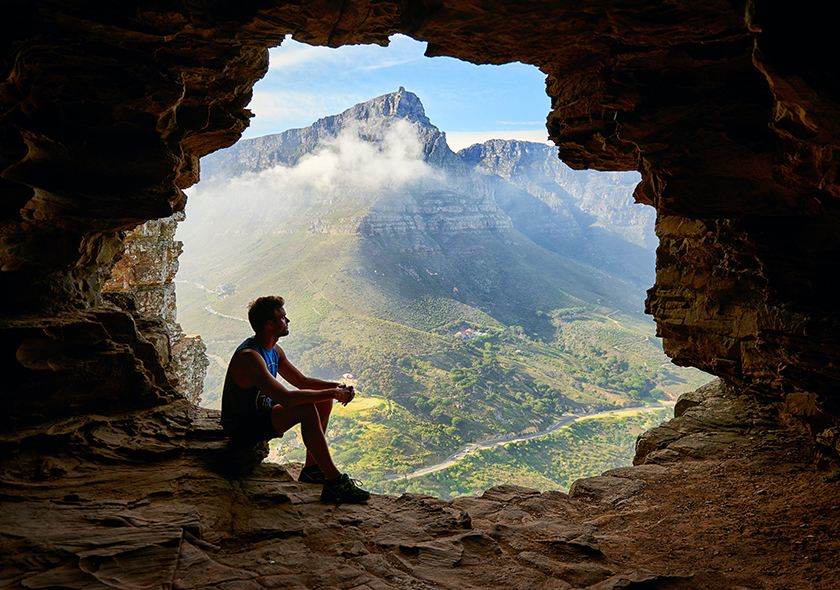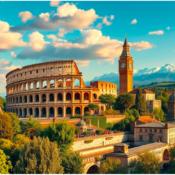15 Best Amazing Places to Explore in Scotland
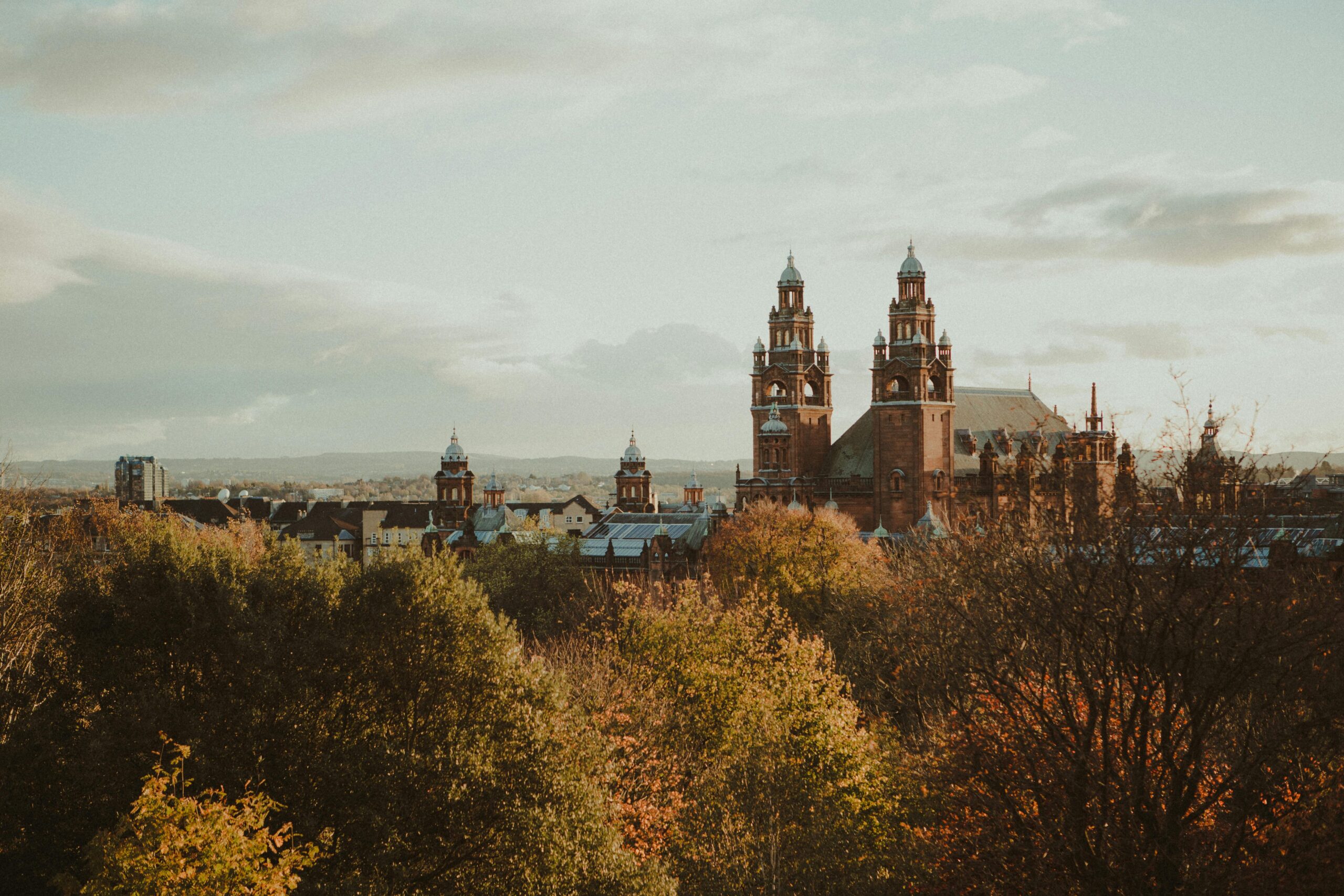
15 Best Amazing Places to Explore in Scotland
When you think of Scotland, you probably picture shaggy Highland cattle, golf, lone castles, skirling bagpipes, the Loch Ness Monster, and Highlanders dressed in tartan. Apart from Nessie, all of these add to the mystery of this extraordinary nation while serving as a very accurate preview of what visitors can see when they come.
Whether you choose to see Scotland by vehicle, boat, beautiful train, or foot along its trails, every trip will leave you with priceless memories. Traveling through magnificent castles and ancient battlegrounds where clans fought, walking in the footsteps of renowned kings and queens, or following literary paths laid by Sir Walter Scott and Robbie Burns, you will discover that history is all around you.
Scotland’s isolation, with its private beaches, wild, beautiful highlands with their deep glens and lochs, and isolated expanses of heather-covered moors, is another of its greatest draws.
There are a ton of interesting things to see and do in Scotland, whether you decide to travel to one of the country’s energetic cities, picturesque towns, or isolated moors and islands.
With this list of Scotland’s best attractions, you can plan a trip to some of the UK’s most popular destinations.
Best Places to Visit in Scotland:
Below are best places:
1. Edinburgh Castle:
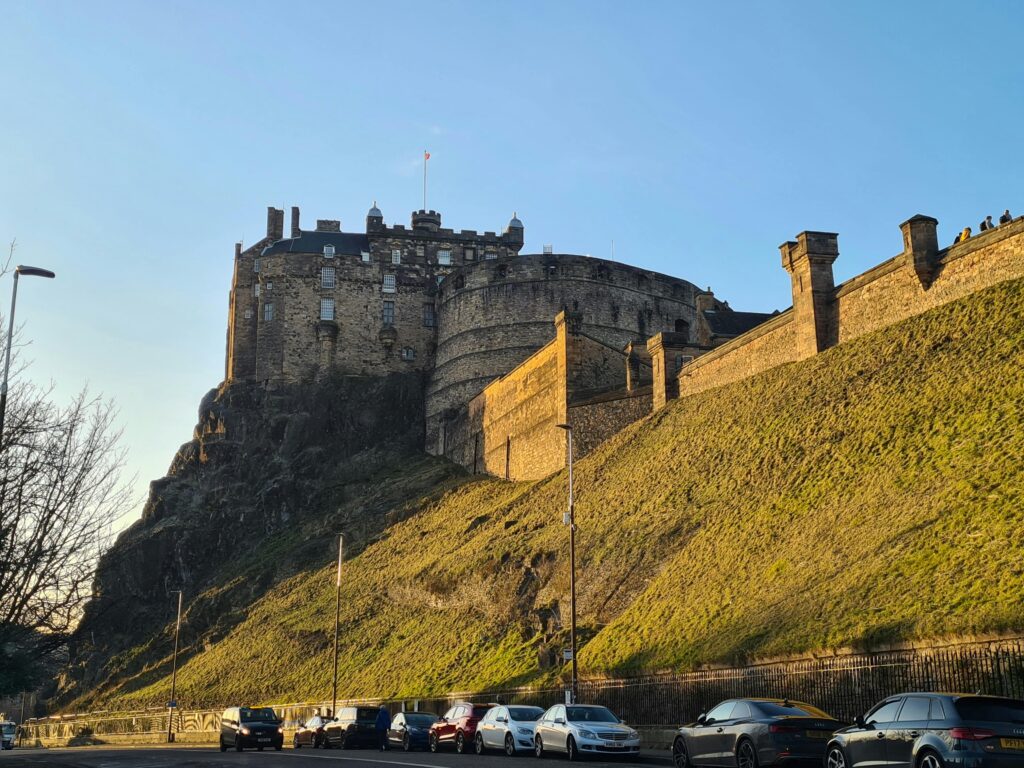
Since the 13th century, Edinburgh Castle’s stone walls and towers have dominated the city’s skyline. Situated atop a black basalt rock, it provides breathtaking city vistas and an insight into Scotland’s turbulent past.
The magnificent Crown Jewels, the well-known Stone of Destiny (also known as the Stone of Scone), and St. Margaret’s Chapel—the oldest structure in Edinburgh—are the main attractions of Edinburgh Castle. Over a drawbridge and an ancient moat, you’ll reach the castle from the wide Esplanade, the site of the renowned Edinburgh Military Tattoo held every August. The castle gates appear to be guarded by bronze statues of the legendary warriors William Wallace and Robert the Bruce.
Below, one of the best free things to do in Edinburgh is still to take a walk down the Royal Mile. The magnificent Palace of Holyroodhouse, another of Edinburgh’s most well-known sights, is reached by following the Royal Mile as it stretches down the precipitous slope. One of the best parks and green areas in Edinburgh is Holyrood Park, which is nearby. Make sure to include some time in your agenda to explore this park.
The Royal Mile, which is flanked by old buildings and brick townhouses, is yet another attraction worth seeing. Between its lofty buildings, some reaching more than ten floors on the downhill side, are narrow little lanes just waiting to be discovered. These alleys are lined with little stores, kilt makers, tearooms, museums, and cafés. Known as “winds,” they are a lot of fun as they flow between tiny secret passageways.
Make sure your plan for Edinburgh includes a visit to the National Museum of Scotland as well. One of the best free museums in Scotland, it features everything from science and art exhibits to medieval relics.
2. Loch Lomond, Scotland:
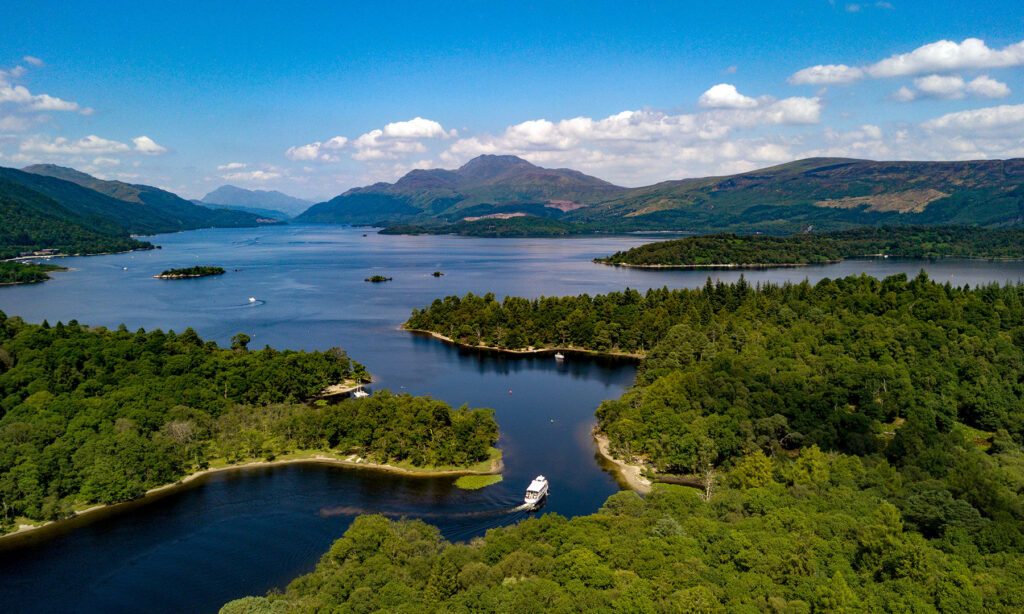
Britain’s largest lake, idyllic Loch Lomond, is only a short drive northwest of Glasgow. Walter Scott, the Scottish author, also refers to it as “The Queen of Scottish Lakes.” This stunning region of Scotland is also a well-liked day trip destination from the city, offering an abundance of water sports opportunities, hiking trails, and trout, salmon, and whitefish for fishermen to entice them.
Popular activities in Loch Lomond include lakeside strolls, boat rides, and lengthier hikes up the towering Ben Lomond (3,192 feet). You may take in breathtaking views of the Trossachs National Park from this location.
The most recent addition to this area is Loch Lomond Shores, which has a fantastic mall with local crafts for sale, a farmers’ market, dining options, and rentals for bikes and boats. The Loch Lomond SEA LIFE Aquarium is a big draw locally. Scotland’s largest shark tank may be found in this family-friendly attraction, along with exhibitions of local marine life. If the weather permits, don’t forget to visit the rooftop.
If you are on a tour from Glasgow to Fort William via the Argyll countryside and the Western Highland Way, Loch Lomond is a good place to start. At Cameron House, at the south end of the loch, you may experience the romance of a Scottish rural house and engage in a variety of outdoor sports, including golfing on the lakeshore.
3. Caledonian Canal:
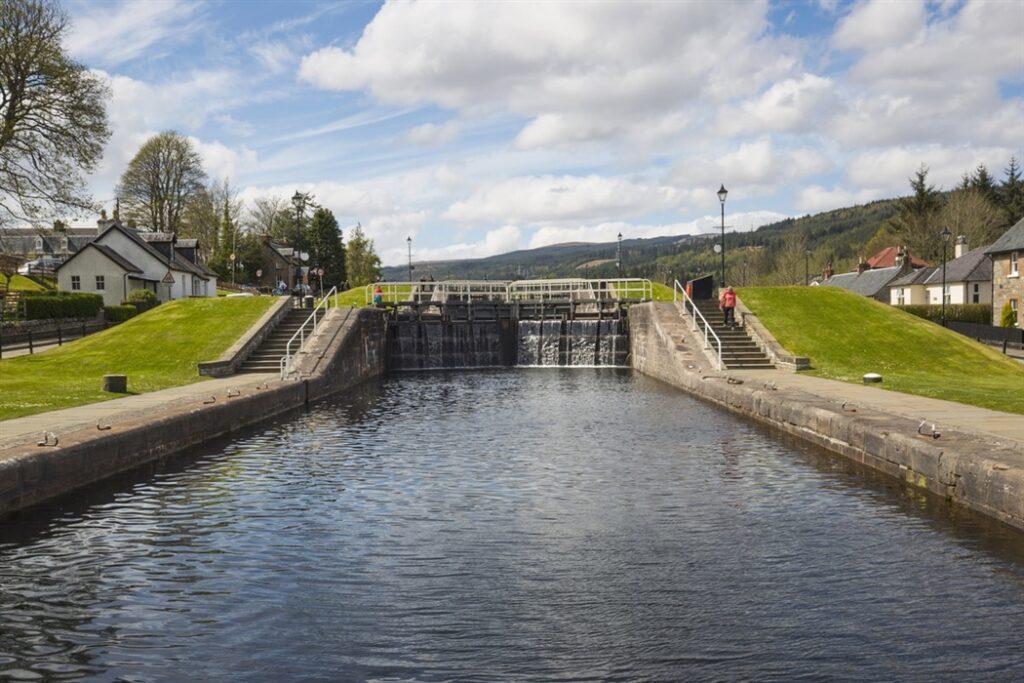
When you think of Loch Ness, you almost certainly conjure up the legendary creature that has, so the story goes, lived in this 23-mile-long body of water for countless years. Loch Ness, the biggest body of water in Scotland’s Great Glen, is a section of a river that links the country’s east and west coasts.
The Caledonian Canal connects it to three other lochs, and you can take short boat rides from either end or a six-hour journey from the other. With these enjoyable canal cruises from Dochgarroch, you can see the locks in the canal that regulate the fluctuating water levels.
Some of the most breathtaking Highland landscape envelops the canal and all the lochs, but none is more picturesque than Loch Ness itself, with the magnificent ruins of Urquhart Castle perched on its hillside above the lake. 500 years after it built in the 12th century and the setting for numerous old myths, the castle destroyed by fire.
You can reach the castle by boat or while on a Loch Ness cruise, and the best views are from the water. The Loch Ness Exhibition at the Drumnadrochit Hotel features intriguing information on the geological formation of Loch Ness and the surrounding area in addition to exhibits and sighting reports that feed the legend of Nessie. It’s easy to get from Inverness to the castle, the canal, and Loch Ness.
Even while traveling to Loch Ness from Edinburgh or Glasgow can take several hours, the trip is well worth it, particularly if you intend to make a fun weekend getaway in Scotland out of it.
4. Royal Yacht Britannia:
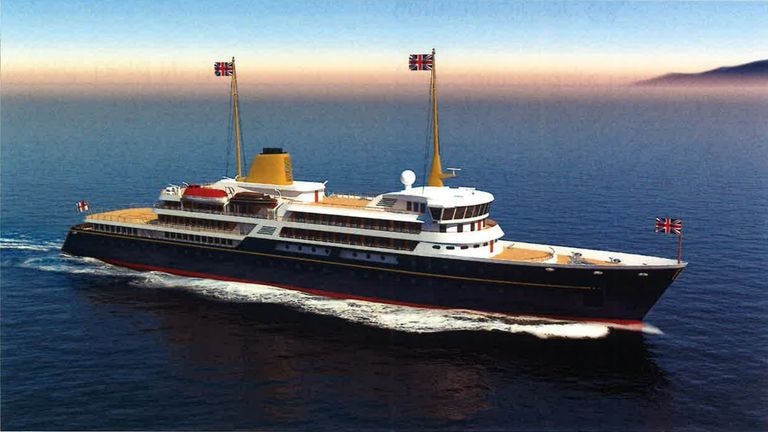
The Royal Yacht Britannia was a floating royal home that sailed more than one million miles across the globe for more than 40 years. Explore Britannia’s five major decks with this audio tour, stopping at the Bridge, State Apartments and Royal Bedrooms, Crew’s Quarters, and Engine Room to get a glimpse into the lives of the royal family, their visitors, and the crew.
The Rolls-Royce Phantom V that was once utilized for aboard travel is also visible, as it makes a stop in the Royal Deck Tea Room for afternoon tea and pastries. The Fingal Hotel, which opened as a new attraction in 2019, provides opulent lodging in a former lighthouse tender that berthed adjacent to the royal boat.
5. Islye of Skye, Scotalnd:
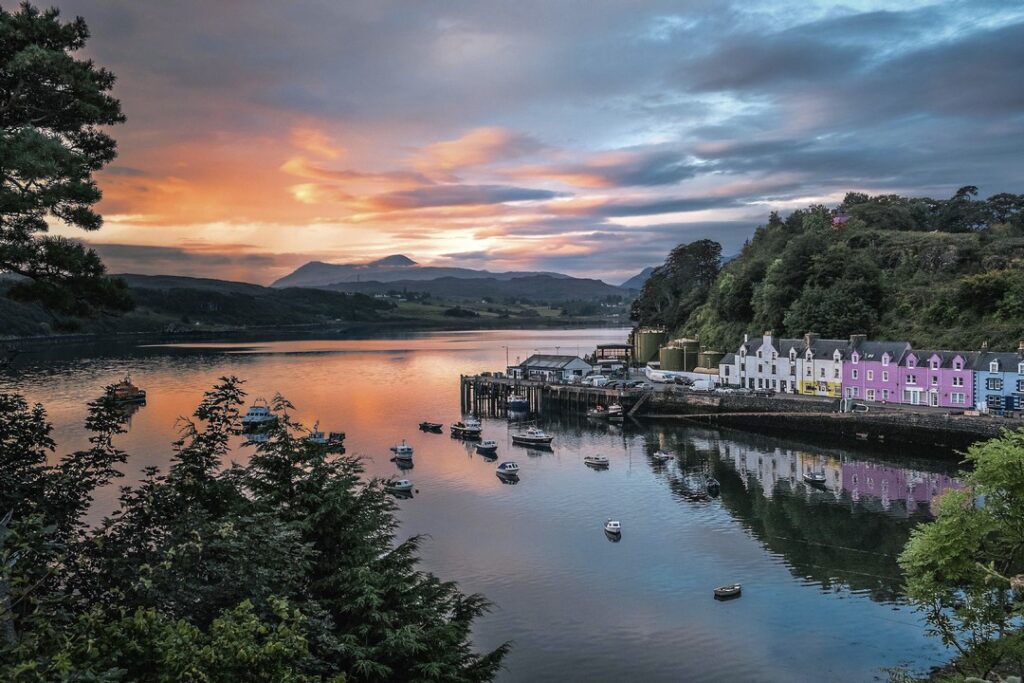
The largest of Scotland’s inner isles, Skye is especially popular with hikers, wildlife enthusiasts, and birdwatchers. Some of Scotland’s best sandy beaches, gushing waterfalls, verdant valleys, caves, and lonesome glens are features of its wild, picturesque alpine environment. Considerably more breathtaking beauty may found on an island that only 50 miles long and never wider than 15 miles.
Along with a plethora of wildlife, which includes seals, otters, and at least 200 different species of birds, the island also contains remnants of ancient oak woods. Skye is easily accessible since a bridge connects island to the mainland. You can also travel here by ferry for more enjoyment.
Among the other islands in the Inner Hebrides are Staffa, Iona, Jura, Mull, Raasay, and Islay. Although getting to Iona involves two ferry crossings and is slightly more difficult, the experience is incredibly rewarding. As a result of St. Columba’s arrival from Ireland in the sixth century to preach the gospel, this area known as Scotland’s “Cradle of Christianity”.
Its highlights include evocative abbey remains, a 12th-century church, and a 10th-century carved stone memorial. Scotland’s oldest Christian cemetery is located there as well, and over 60 Scottish rulers, including Macbeth, buried there.
Don’t forget to set aside some time to explore Portree. One of Scotland’s most picturesque tiny towns, Portree has a quaint natural port where you can grab some fresh seafood or just people watch. Even better, you may take part in an enjoyable fishing excursion from here to capture some fish of your own.
6. Stirling Castle:
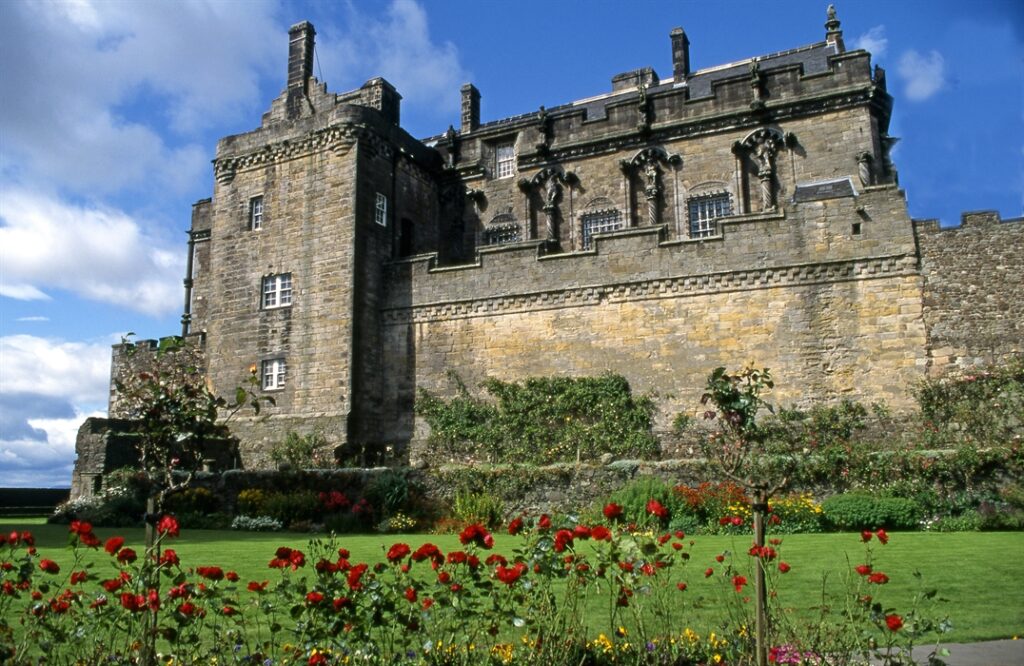
One of the best-preserved Renaissance structures in the United Kingdom is Stirling Castle, the childhood home of Mary Queen of Scots and the palace of James V. Additionally, it’s a great place to travel on a day trip from Glasgow, which is 45 minutes south, or Edinburgh, which is only an hour to the east.
The castle’s great halls and chambers have been meticulously renovated and equipped to resemble those of the 1500s, down to the meticulous replication of its tapestries, even if some older buildings still survive. Weekend History Hunter events are tailored for young adventurers. And costumed interpreters engage with guests to bring the castle and its history to life.
Stirling, which is between Edinburgh and Glasgow, is well-known for two historical events: the Battle of Stirling Bridge, in which the fabled William Wallace achieved Scottish independence, and the Battle of Bannockburn, in which Robert the Bruce defeated the English invaders in 1314. Exhibits and displays about this significant period are superb at the magnificent Bannockburn Heritage Centre.
Located between Stirling and Bridge of Allan, the magnificent Wallace Monument is a 246-step tower that offers breathtaking views of the surrounding countryside. There some objects on display that purported to have belonged to the renowned Wallace.
Also Read: Best Places To Visit in England
7. Kelvingrovw Art Gallery:
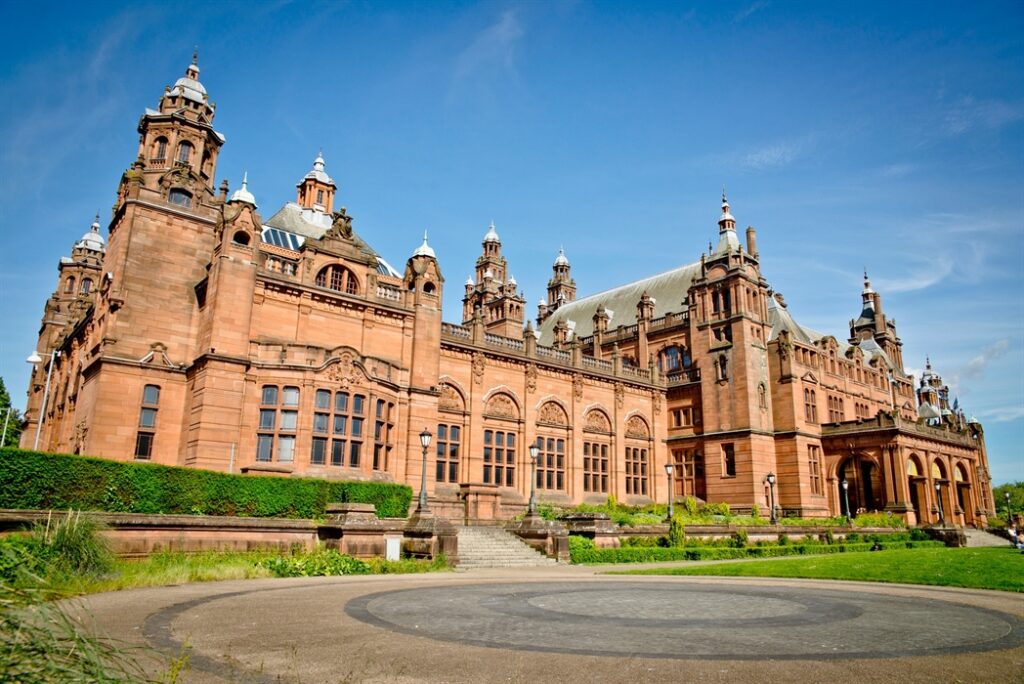
Admirers of the Glasgow Style, a distinctive aspect of the Arts & Crafts movement and Art Nouveau styles of the early 20th century, have made Kelvingrove Art Gallery and Museum their first port of call since a fire destroyed much of Charles Rennie Mackintosh’s work at the Glasgow School of Art.
The Charles Rennie Mackintosh and the Glasgow Style Gallery established and opened just before the fire. In addition to pieces by other well-known movement artists, the gallery features multiple full Mackintosh rooms.
A 1944 Mark 21 Spitfire is on exhibit in addition to other noteworthy items, such as a Van Gogh picture, Bronze Age implements, and jewelry from Arran and Kintyre. Salvador Dali’s Christ of St. John of the Cross is one of the museum’s most well-liked exhibitions; you should also view the magnificent 1901 organ, which utilized for daily free concerts.
Traveling during the off-season? Glasgow’s various museums and cultural institutions organize seasonal events and programs, making it one of the best places to visit in Scotland throughout the winter. Several of the city’s parks and open areas transformed into Christmas markets and skating rinks.
8. St Andrews Golf:
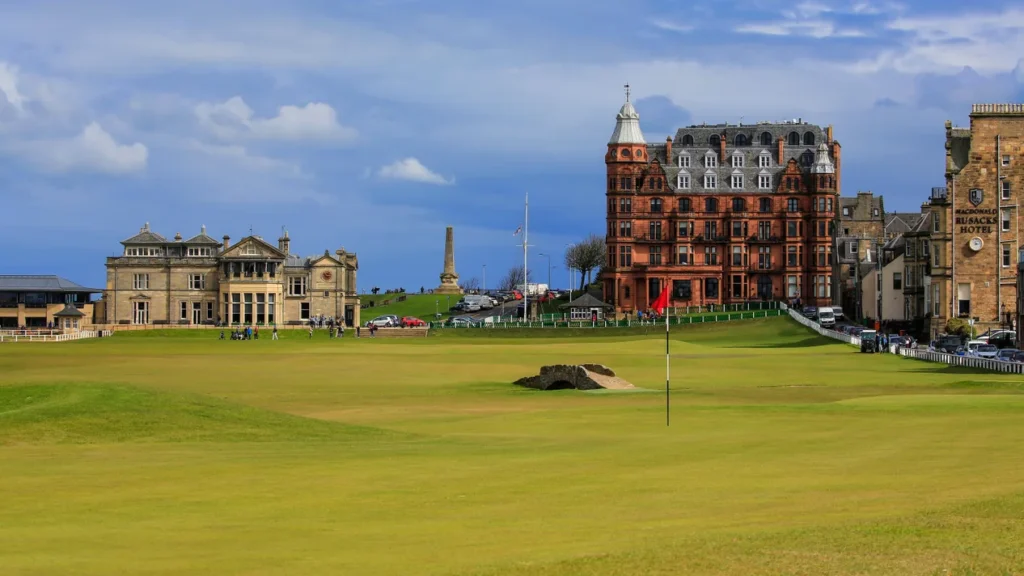
Numerous inventions, such as the bicycle, telephones, postage stamps, and steam engines, attributed to the Scots. But the game of golf is arguably their most enduring invention. Playing at the esteemed Royal and Ancient Golf Club of St. Andrews is a lifelong goal for many golf enthusiasts.
Located 12 miles southeast of Dundee, it established in 1750 and widely acknowledged as the international governing body for golf. Currently, one of St. Andrews’ numerous 18-hole courses—the most well-known being the par-72 Old Course that hugs the rocky coast—hosts the renowned British Open on a regular basis.
Tee times usually reserved six months in advance; however, some held open by lottery for anyone without reservations two days beforehand. The magnificent historic Clubhouse and the British Golf Museum, which chronicles the development of the “home of golf” from the Middle Ages to the present, are both well worth seeing.
9. Fort William, Scotland:
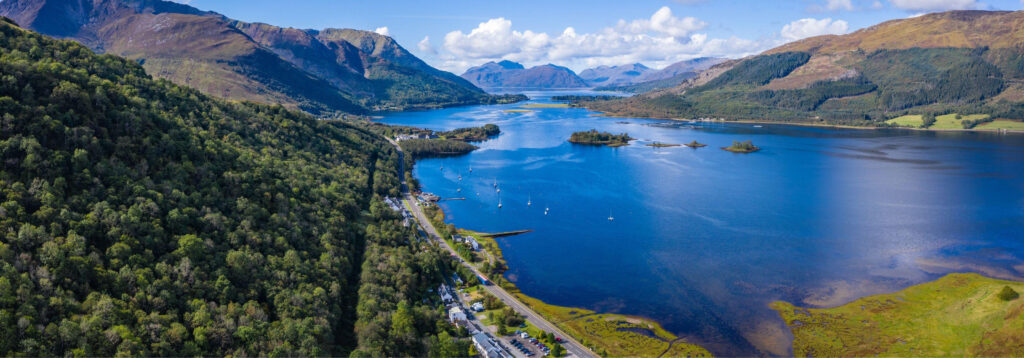
The charming hamlet of Fort William is the ideal starting point for exploring Ben Nevis, the highest mountain in Britain.
This seaside village, which located at the southeast end of the Caledonian Canal, has its origins in the ancient fort that constructed here in the seventeenth century. Now long gone, the West Highland Museum houses substantial collections of paintings, Highland costumes, and weapons, as well as an exploration of the fort’s history.
Taking the Jacobite steam train is a must-do. The train crosses the breathtaking Glenfinnan Viaduct as it travels down the West Highland Line. A route made famous by the Harry Potter film series.
And Ben Nevis comes next. A site that’s easy to see from Fort William on a clear day. It attracts a lot of hikers, both casual and dedicated. Even though it’s high, the climb only takes about 2.5 hours. The breathtaking vistas, which stretch as far as Ireland and as far as 150 miles across the Scottish Highlands, make it well worth the effort.
10. Riverside Museum, Scotland:
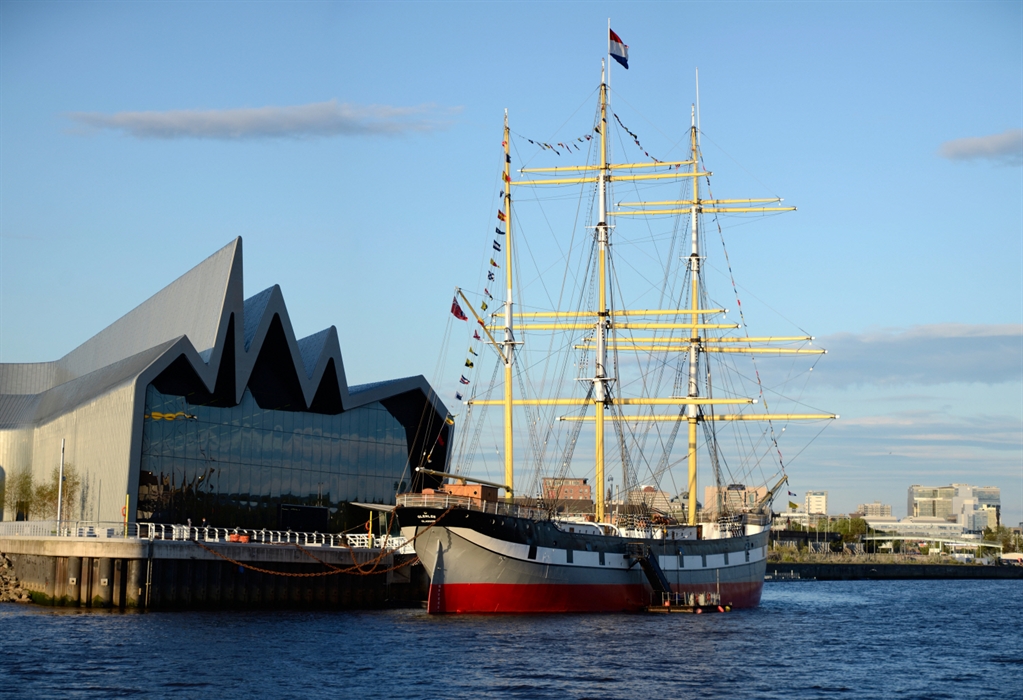
The free Riverside Museum in Glasgow, one of Scotland’s most popular tourist destinations. Brings together the history of land and sea transportation in a striking new location. You will see ships and various models throughout your tour. As well as trams, locomotives, buses, horse-drawn carriages, and vintage cars.
The real-life replica of Glasgow’s streets in 1938, complete with stores you can visit. And platforms going to every locomotive on show, is a highlight. The collections gain additional meaning from the sights, memories. Films added by over 20 interactive displays and 90 big touch screens.
You can board the tall ship, the S. S. Glenlee, which was built in 1896, outside on the river Clyde. It is notable for being the only ship still in service in Britain that was built in Clyde.
11. Scottish Highlands:
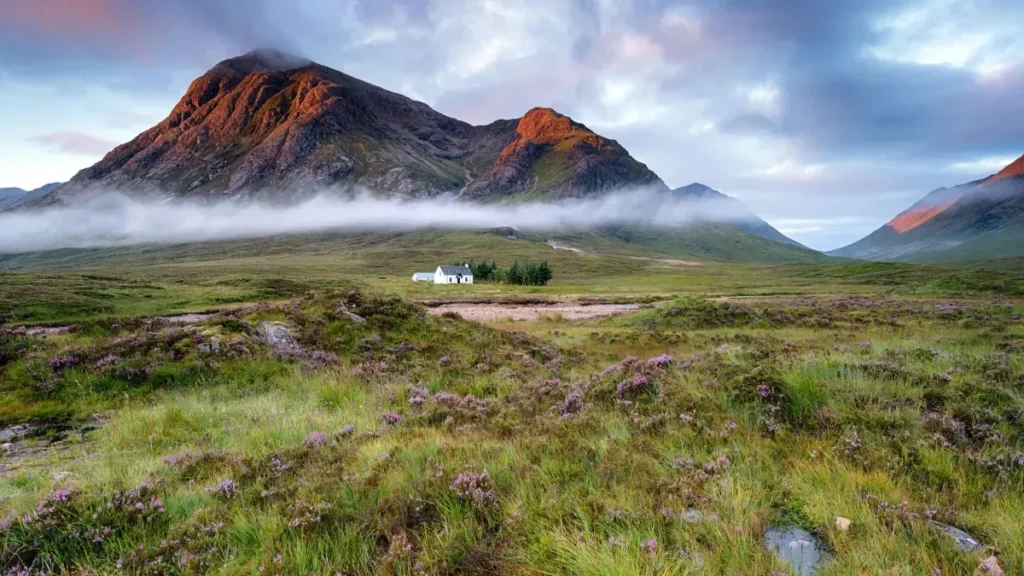
The wild, untamed landscapes and lengthy, violent, yet romantic history of the Scottish Highlands is the source of their mystique. Tucked away in Britain’s largest area of outstanding natural beauty. These mountains and rocky coasts are as popular with hikers and cyclists. As they are with fishers, golfers, sea kayakers, white-water rafters, gorge walkers, and other outdoor enthusiasts.
It is dotted with quaint tiny towns and villages that offer places to stay and eat. Visit the little seaside town of Dornoch to witness the remnants of its castle and cathedral. And John o’Groats, which offers a panoramic view of the Pentland Firth.
And is home to a much-photographed sign indicating that it is the northernmost point of Britain. From here, Land’s End in Cornwall, the southernmost point of the nation, is 874 miles away.
The North Coast 500 is a delightful new tourist route that’s perfect for exploring the Scottish Highlands. If you have a lot of free time and have leased a car. We’d suggest spending at least five days or a week to see everything there is to see along this amazing driving route, though you could certainly do it sooner.
12. Isle of Arran, Scotland:
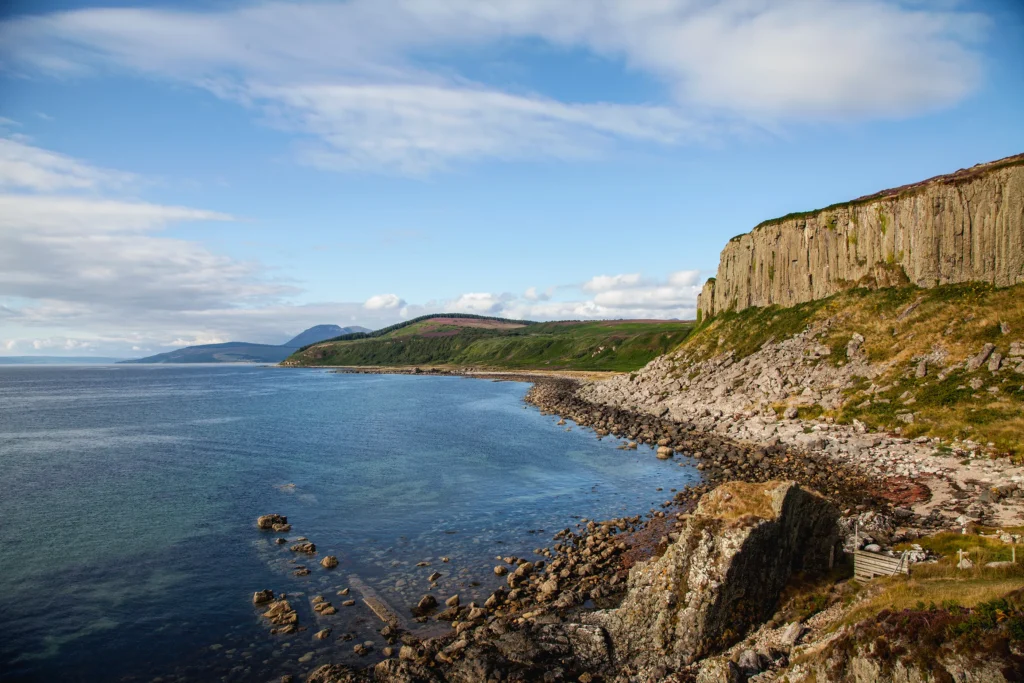
Arran, a beautiful island, referred to be “Scotland in miniature” for good cause. Covering just 166 square miles, this picture-perfect island off the west coast of the nation reflects the scenery of the entire nation.
Less than an hour’s ferry voyage from Glasgow brings you to undulating moors, rocky highlands, sandy beaches, fishing harbors, castles, and golf courses. Even while you may explore some of the nicest parts of Arran in a single day. It’s recommended to plan on spending a day or two sightseeing to ensure.
The best part is that buses often go throughout the island, connecting its primary points of interest. So a car is not necessary. Though its highlights, such as Goat Fell Mountain (2,866 feet) and Brodick Castle, may be seen in a single day (including the ferry voyage). You might easily spend several days touring this small taste of Scotland. You really, truly ought to.
13. Battle of Culloden:
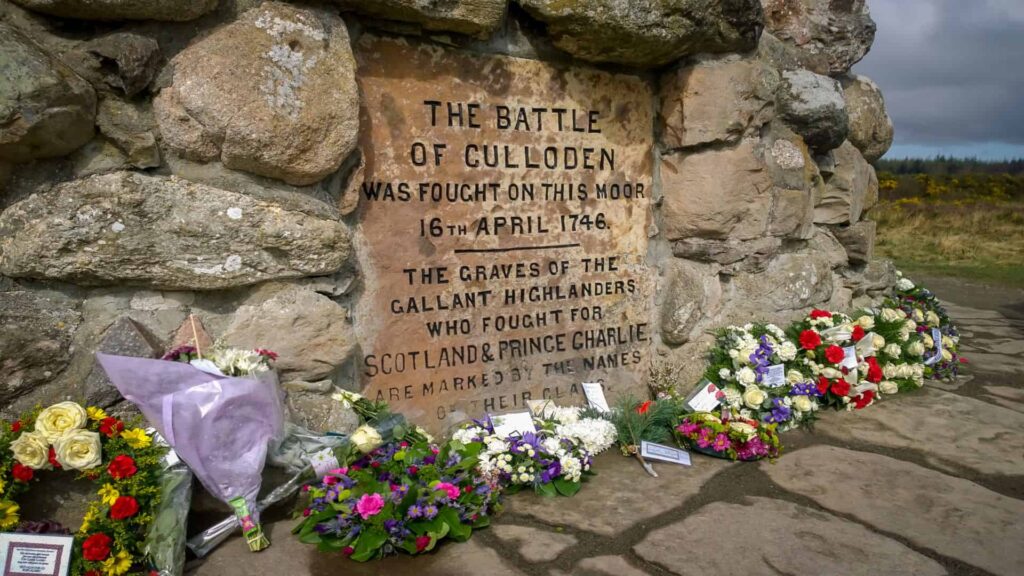
There aren’t many tourist destinations in Scotland that have the same emotional impact as the Culloden Battlefield and Visitors Centre. The last attempt by Scotland to gain its independence from England by force was crushed here in April 1746. In what became known as the Battle of Culloden, though many still regard it as a slaughter.
The best place to start your journey is the modern visitor center. Apart from its outstanding exhibits providing viewpoints and first-hand narratives of this historic day in Scottish history. There’s an outstanding immersive movie that describes the main events as they happened. Additionally, there’s a rooftop observation deck with a view of the actual battlefield.
Make sure to take your time exploring these areas on your own. A Memorial Cairn, several Scottish clan tombstones, and the Cumberland Stone. Designates the location from which the English controlled the battlefield, are among the site’s highlights. A few structures still stand, one of which being the Old Leanach Cottage.
Though the location is easily accessible from Inverness (less than 15 minutes by vehicle east). Individuals who would rather delegate the heavy lifting to others might want to include the attraction in an organized trip.
14. Burns Heritage Trail:
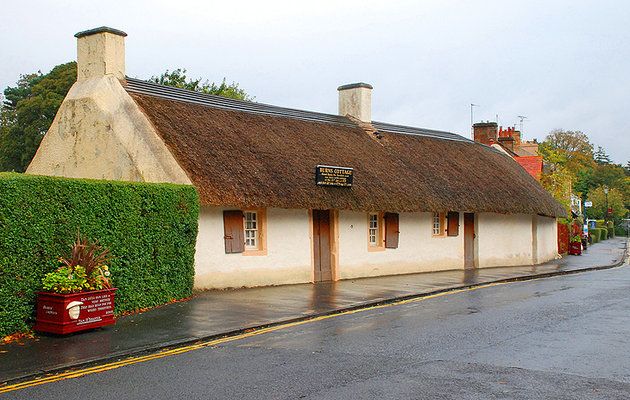
A trip to Scotland wouldn’t be complete without stopping at one or two locations connected to its most well-known son, poet Robbie Burns. Walking the Burns Heritage Trail is a wonderful way to explore some of the most stunning areas of the nation. And learn a little bit about Burns’ life and times.
Commence at Alloway, the Robert Burns Birthplace Museum, which is located outside of Ayr. The poet was born and raised in this well-preserved thatched house for a large portion of his boyhood.
Other Burns-related sites worth seeing are the 16th-century Auld Kirk, where his father is buried. A collection of his most significant writings. And a memorial and gardens designed to honor his life and time spent in Ayr.
This journey circles back to Dumfries from Ayr. This is the magnificent Robert Burns House. The poet lived for the final four years of his life. Before passing away in 1796 at the age of 36. Burns’s life is vividly shown at this attraction, which is now a museum featuring relics related to him. His final burial place is located nearby in St. Michael’s Churchyard.
15. Kelpis & Falkirk Wheel:
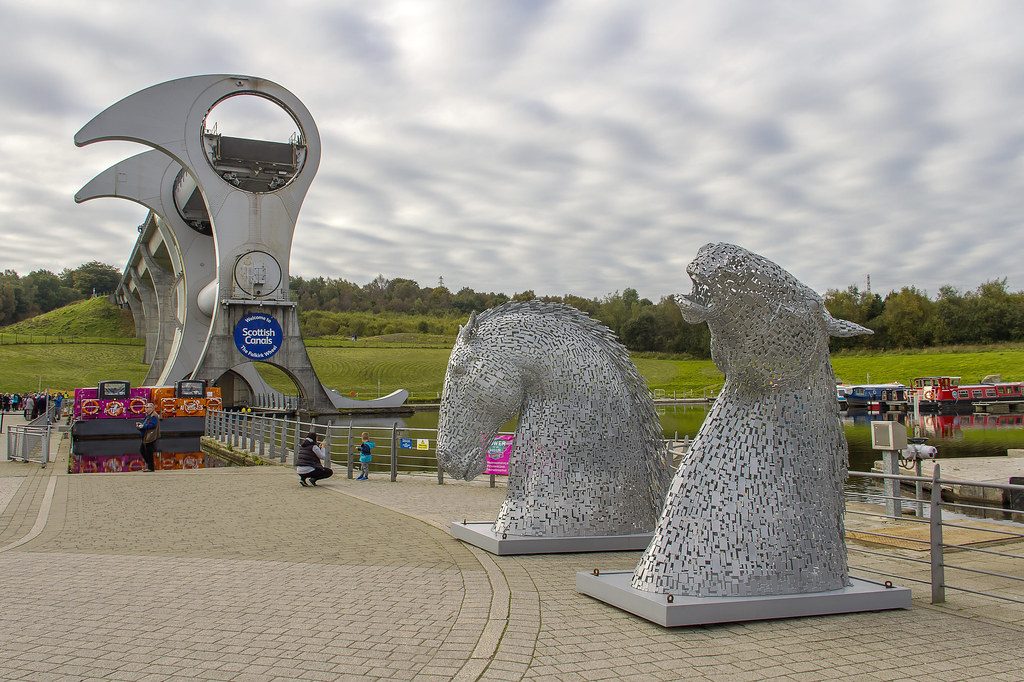
Drive about 25 minutes south of Stirling and you’ll be gazing at two of the most amazing pieces of art in the United Kingdom: The Kelpies. These two enormous statues of water horses, standing more than 100 feet tall, are the focal point of The Helix.
A sizable public park located in Falkirk. Constructed in 2013, the park and its pair of kelpies are iconic locations for selfie enthusiasts.
Don’t forget to check out the Falkirk Wheel. Constructed to link the Clyde, Forth, and Union canals, this striking 115-foot structure located only fifteen minutes’ drive west of the kelpies. Even while it’s entertaining to view it from the ground. You can also take a one-hour boat ride that takes you up. And down this incredible architectural achievement on a regular basis.
Click here to know more
For more information, visit Travel India Info for your upcoming trips or mail us at info@travelindiainfo.com. We will be happy to assist you. Happy Travelling!!
Recent Posts
Europe Travel Guide: Best Places to Visit & Explore
15 Best Amazing Places to Explore in Scotland
9 Best Amazing Day Trip To Explore from Kyoto
